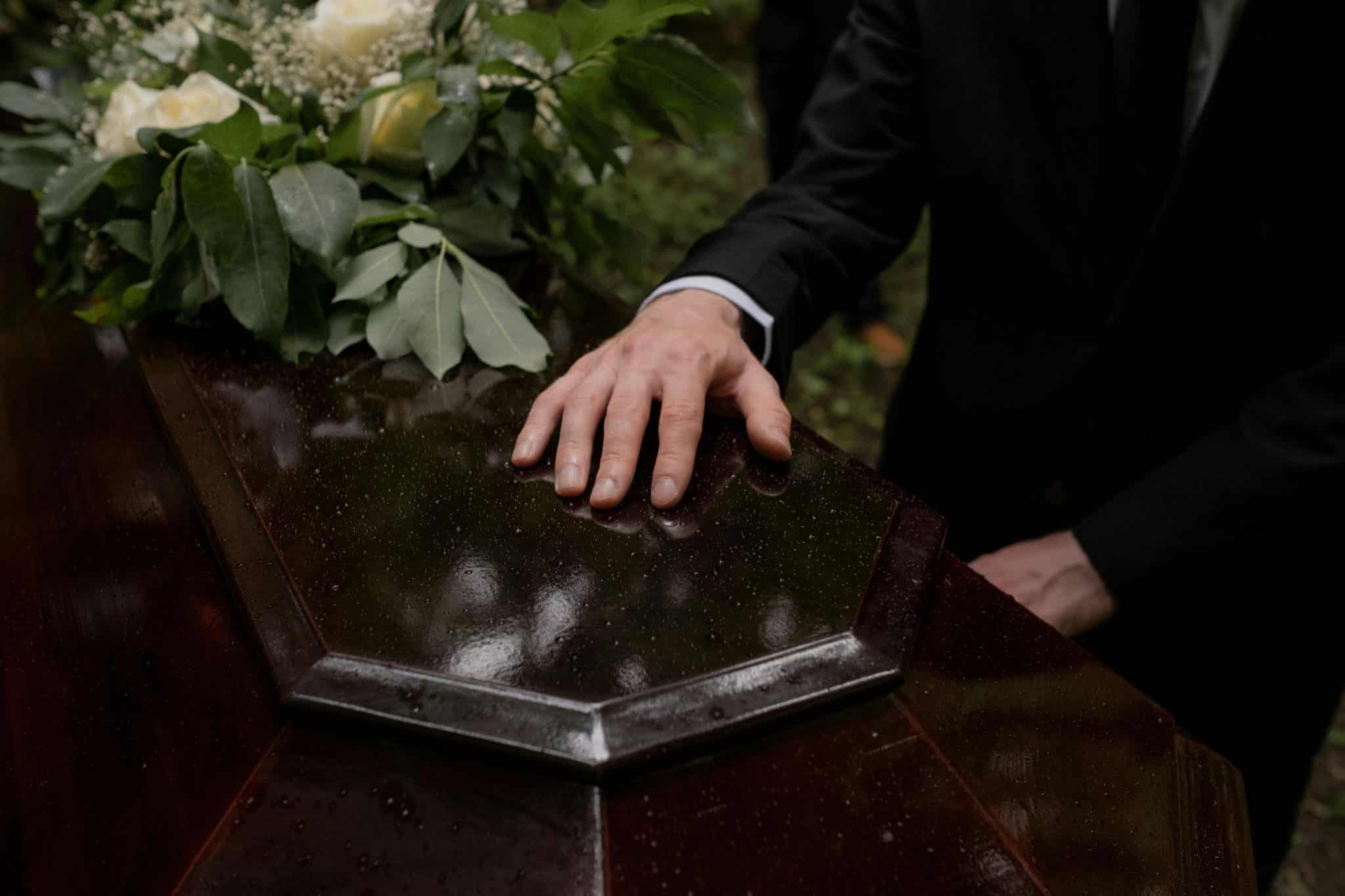“You are not alone. It’s okay to ask for help”: How to recognise suicidal thoughts and journey with someone
On World Suicide Prevention Day today, Salt&Light recognises all who have journeyed with those struggling with suicide.
Christine Leow // September 10, 2020, 12:01 am

"Validating doesn’t mean you’re agreeing that suicide is okay. Validating someone's emotions means honouring how they’re feeling. That is important,” says Pamela Koh, lead counsellor at Thrivesg, a ministry of Cru Singapore. Photo by Ian on Unsplash.
The first time she thought about killing herself, she was seven.
“A lot of it had to do with relationships with my family. I would react very strongly to people’s responses to me.
“I would turn it inward and it would affect my self-worth. It was like, ‘If my problems are not important, then I’m not important’, said Rachel (not her real name), 25.
Family life was tough. Her father was often not around. When he was, his relationship with the family – Rachel, her younger sister and her mother – was strained at best. When she was 17, her parents eventually divorced.
There was no one she felt “safe enough” to share her feelings with.
“My mum was very independent and she taught me and my sister to be independent, too. So, if I went to her with a problem, she would be like, ‘Don’t come to me with problems’.
“Or if I asked her for her opinion, she would say, ‘You have your own opinion, why ask for mine?’”
There was no one Rachel felt “safe enough” to share her feelings with. “It was lonely,” she admitted.
“I felt like I couldn’t speak up, couldn’t ask for help. I just had to deal with things on my own. So, I tended to withdraw from people, which made things worse.”
“The physical pain was better than the emotional pain.”
Suicide became a way to “escape from the emotional pain” throughout her childhood and teens.
Although she never really attempted to kill herself, she had to “really stop myself from standing near windows or ledges because there was always that really strong temptation to jump”.
She also resorted to self-harm, cutting herself with scissors, penknives and even the kitchen knife.
“I had two friends in Primary School who did it. That gave me the idea,” said Rachel.
“It was a way for me to cope with the emotional baggage. The physical pain was better than the emotional pain.”
Then came the gap year she took after graduating from a polytechnic. She went to work for parachurch organisation Cru Singapore,
“It was during a mission trip (with Cru Singapore) that I felt very triggered by relationship issues. I started to self-harm, something that I had stopped doing in Secondary School. And the urge to want to kill myself came back. For some reason, I managed to tell my team member about it.”
When she came back to Singapore, a counsellor in Cru Singapore offered to journey with her. The counselling went on for nearly a year.
“The ideas (of suicide) don’t disappear completely.”
“One of the biggest breakthroughs (during counselling) was coming to understand God as a loving Father because I never had a loving father in my life.
“On one of my trigger days, a thought came to me from God, ‘If you kill yourself, you’re robbing Me of what I can do through you and everything I want to do in your life’.
“That completely stopped me in my tracks.”
Rachel’s own struggles with suicide has given her a heart for youths who have similar struggles. A trained psychologist, she hopes to journey with these youths as she was once journeyed with.
“The ideas (of suicide) don’t disappear completely. But I get triggered less often and the duration in which I would be in that emotional state is much shorter. It used to last a week but now it’s a few days.”
Asked if there was one message she wishes someone had told her in her teens, she said: “You’re not alone. It’s okay to ask for help.”
Suicides on the rise
Rachel is not alone in her struggle with suicide.
In a Samaritan of Singapore (SOS) media release in August 2020, it was noted that suicides have gone up. There were 400 reported cases in Singapore in 2019 up from 397 the year before. This was even before the Covid outbreak.
Suicide also remains the leading cause of death for youths aged 10 to 29. The number of suicide deaths amongst those between 20 and 29 is the highest compared to other age groups, accounting for a third of all reported deaths in this age group.
To better understand the warning signs of suicide and what can be done to journey with those who have suicidal thoughts, Salt&Light spoke to four counsellors:
What are the warning signs of suicidal thoughts?
When someone begins to verbalise their suicidal thoughts, the people around should pay attention, highlighted all the counsellors.
Said Bettina Yeap, senior counsellor, INSIGHT, Care Corner Singapore: “They start talking about wanting to die or saying things like, ‘You’ll be better off without me’.
“When they start to wrap up loose ends like saying goodbye or giving their things away – these are warning signs.”
In this digital age, the desire need not be expressed in person. Social media posts can be just as telling.
“Teens use a lot of social media for communication. They tend to express themselves there because they feel safe. So, if they post on Instagram, it could also be a red flag,” said Pamela Koh, lead counsellor at Thrivesg, a ministry of Cru Singapore.
Having a concrete suicide plan or having done research on the ways to commit suicide also compounds the severity of the situation.
“Men tend not to be so open about talking about their feelings.”
Other warning signs, said Koh, include “a sense of hopelessness about the future”.
That sense of hopeless and helplessness may translate into losing interest in the things around them, warned principal counsellor of Focus on the Family Singapore, Theresa Pong.
“Watch out for other changes like weight loss, emotional outbursts – anger, sadness, irritability,” said Pong.
As statistics bear out, gender and age are both risk factors and warning signs.
“Males are twice as likely to die by suicide. In 2019, for every three reported deaths by suicide, two were males.” said Shawn Lai, counsellor and social worker with SOS.
This is because they tend to use more lethal, and irreversible, methods.
Explaining why young men are more vulnerable, Lai said: “Men tend not to be so open about talking about their feelings. Getting them to seek help and talk to a counsellor is a little more challenging. So, there is no emotional outlet or safe space for them to share.”
These warning signs, however, have to be considered in totality.
“It’s about the frequency and intensity of some of these signs across time. If there are five or six of these symptoms over at least two weeks, then we have to be more vigilant,” said Yeap.
Signs of suicide:
- Talking about dying
- Researching suicide
- Concrete plans on how to commit suicide
- Saying goodbye – verbally, posts on social media, writing suicide notes
- Giving away personal items
- Changes in behaviour – sleep patterns, eating habits, emotional outbursts, withdrawal from family and friends
- Loss of interest in things around them
- Sense of hopelessness or helplessness
Is self-harm a sign of suicidal intentions?
Self-harm may be a warning sign of suicidal ideation but it can also be a coping mechanism, said the counsellors.
“Self-harm may or may not lead to suicide, but it is a warning sign.”
“Self-harm can be used to deal with emotions too difficult to bear. Self-harm may or may not lead to suicide but it is definitely a warning sign that the person is not able to regulate or manage one’s emotions and may need help,” said Koh.
Either way, counsellors say it is important to seek professional help once you discover someone is resorting to self-harm.
“They need help to make sense of why they are turning to self-harm. The moment there is self-harm, it can also lead to accidental death,” said Lai.
What if they refuse to talk?
Suicide does not happen overnight, say the counsellors. With regards to teens, counsellors encourage parents to adopt pre-emptive tactics.
“Don’t feel like you have to wait to see a huge, red flag before you talk to them.”
“Whether there are signs or not, parents need to be observant. Initiate conversations and engage your children to find out what they are doing. Especially if you are aware the child has just gone through some major stressor, loss or adverse life situations.
“Don’t feel like you have to wait to see a huge, red flag before you talk to them. If you notice signs, say, ‘I’m wondering what’s going on. Is it stressful for you in school?’” suggested Koh.
The point is to create a safe space for the child so there is “an outlet for them to deal with the pain without needing for it to degenerate”.
Added Lai: “Be present even if your kid doesn’t talk. Let them know that regardless of what happens, you are available.”
What are the triggers?
External factors such as major life transitions – changing schools, starting National Service – or traumas such as losses, disappointments and relationship issues can be risk factors.
“You may want to take note of how the child is coping with these events,” said Lai.
Internal pressures can also be triggers. With these, Yeap said, helping to manage expectations can be effective.
“We are made for community. We need support. We need healthy friendships.”
“Parents must also be open to recognising and being able to say that life is not just about grades. Especially when children are younger, parental influence can play quite a big role.”
Internal pressures can be compounded by social media with reports on celebrity suicides.
Added Koh: “Developmental issues such as trauma from young, attachment issues where parents are too busy to meet the emotional needs of the child through empathy, and validating a child’s feelings (of inferiority), can also affect the child’s ability to manage stresses and challenges.”
Other factors that can also put a person at risk of developing suicidal ideations are not having safe relationships or a community of support
“We are made for community. We need support and healthy friendships,” said Koh.
How can parents help?
Don’t panic. This is the advice many of the counsellors give to parents who either suspect or know that their child has suicidal ideations.
Talk to them. This is the other piece of advice. It is a myth that you should not ask a person directly about his suicidal thoughts because, whether you raise the issue or not, your child is already thinking about it.
“It is important to process (your own emotions) first before engaging the child. This will minimise unintended unhelpful reactions.”
“Be direct and specific when asking them about suicide,” advised Pong.
But first, Koh said: “Even before parents engage their child on this topic, I hope parents can have compassion on themselves because hearing their own children talk about suicide is difficult.
“The topic can bring up difficult emotions like sadness, fear, shame and their own insecurities for themselves. So it is important to process that first before engaging the child. This will minimise unintended unhelpful reactions.
“Because your child is vulnerable, your first response is quite important. If the child thinks, ‘My parents cannot handle this topic’, then the child may shut down and not feel safe to share anymore.”
Then, said Pong: “Let your child know that you care for him or her and you will walk this journey with them.”
Listening instead of offering advice or solutions to “fix the child or problem” should follow.
Said Yeap: “The immediate focus should ideally be on consoling. Recognise that the suicidal thoughts come from a place of pain or hopelessness. Be empathetic and curious. Don’t take it personally.”
“If the child thinks, ‘My parents cannot handle this topic’, then the child may shut down.”
Added Koh: “Validate your child’s experience. Validating doesn’t mean you’re agreeing with them that suicide is okay. Validating their emotions means honouring how they’re feeling. That is important.”
Next comes a safety plan.
Said Koh: “Keep harmful things away. Then help them identify their triggers – what are some of the triggers that make them feel like having these thoughts.
Encourage them to turn to someone when the thoughts come. And if that person isn’t you, don’t be offended.
“Tell them: ‘I know I may not be the best person you want to talk to, it may be good to talk to someone else about it,” said Koh.
“Help them to recognise that this thought or feeling comes and goes.”
Lai encourages parents to include help lines, counsellors, youth leaders or even good friends in the community of support.
Added Yeap: “Help them to recognise that this thought or feeling comes and goes, and it will pass”
Counsellors also say monitoring the child and having “regular check-ins” about their well-being are vital.
Said Yeap: “Monitor for a week or two to see if some of the signs increase in intensity or frequency. Watch to see if it’s a phase. And give a lot of assurances: ‘I’m here for you’.”
“Validating their emotions doesn’t mean you’re agreeing with them that suicide is okay. It means honouring how they’re feeling.”
When you talk to your child, ask about:
- Plans – Ask if he has made concrete plans, if he has thought about how he would kill himself or has done any research on the matter.
- Frequency – How frequently he thinks of suicide.
- Intensity – How intense the desire to die is on the scale of 1 to 10.
- Feelings – How he feels when he has thoughts of suicide. Some may feel guilt or fear. Both of which show that they want to live.
- Prior attempts – How many times he has tried to kill himself. The more frequently and the more serious the attempt, the more worrying.
- Resources – Check the resources he has at his disposal to help him cope, whether its distractions like exercise or listening to music, or a support system of friends and loved ones.
What if your friend is suicidal?
As is often the case, the person contemplating suicide is more likely to tell a peer than a parent.
“If you think your friend is at high risk of committing suicide and you don’t have the confidence to keep your friend safe, you have to bring somebody else in,” said Koh.
Said Lai: “This is not a responsibility that one person should bear alone.”
Can counselling help?
Koh, who recently started a counselling ministry within Cru Singapore for tertiary and university students called Thrive.sg, is a strong believer in counselling.
“We have this common perception that a person only needs counselling if they have a problem. Counselling should not be approached with this perspective only.
“Counselling can be developmental – it is beneficial for one’s growth and maturity as a person. You can learn skills that can help you manage your emotions, heal from past wounds and overcome limiting beliefs, just like you go to school to learn other academic knowledge and skills,” she said.
Youth leader’s suicide led pastor to raise awareness and support for mental health in churches
“To live is Christ, to die is gain”: A full-time church worker’s struggle with suicide
Unprecedented suicide rate among S’pore’s aged: Are we failing our elderly?
WHERE TO FIND HELP
- E-mail [email protected].
- Call SOS’ 24-hour hotline: 1-800-221-444.
- Contact family.org.sg/counselling. Face-to-face or online Zoom counselling are both available.
- Contact Care Corner Counselling Centre. Call 6353-1180 for a counselling appointment.
Call 6235-4705 for Care Corner Parenting Support
Go to Care Corner Mental Health Instagram @insightccs for resources.
We are an independent, non-profit organisation that relies on the generosity of our readers, such as yourself, to continue serving the kingdom. Every dollar donated goes directly back into our editorial coverage.
Would you consider partnering with us in our kingdom work by supporting us financially, either as a one-off donation, or a recurring pledge?
Support Salt&Light



